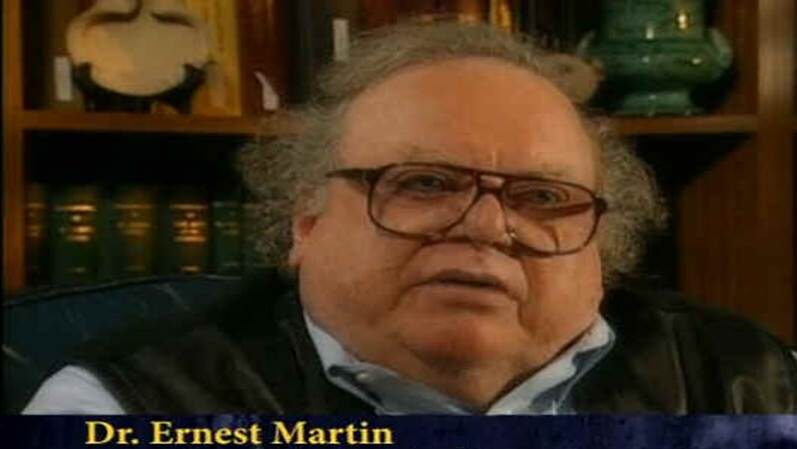We continue, from part 1, part 2, part 3, part 4, considering Ernest L. Martin, Ph.D.’s article titled, “Lingering Idolatry in the Temple of God,” AskELM (as in Ask Ernest L. Martin about whom I previously wrote Nightmare on AskElm Street – angelic “Sons of God”?), September 1, 2000 AD which contains some interesting point, some thought provoking speculations and some very serious errors.
We come back to Ernest Martin’s misunderstanding of the commandment against treating images as idols as he writes:
…those commands of God to make images of Cherubim and place them in the Tabernacle were given to the Israelites in spite of the Second Command of the Ten Commandments which stated: “You shall not make unto you any graven image, or any likeness of any thing that is in heaven above, or that is in the earth beneath, or that is in the water under the earth.” Exodus 20:4
The rest of the Second Command states that Israelites should not bow before such images or idols nor to serve them.

I previously claimed that he was mistaken in breaking a complete thought, the commandment as a whole, into two thought fragments based on it being written out as two verses. Yet, here we see that even though he only quotes the first portion of the thought, he recognizes that it does not end there as “The rest of the Second Command states that Israelites should not bow before such images or idols nor to serve them.” Thus, again, images are not the problem, idols are. Therefore, “those commands of God to make images of Cherubim and place them in the Tabernacle were given to the Israelites in spite of the Second Command of the Ten Commandments” because making of images is commanded and it is idolatry that is condemned.
Ernest L. Martin has a modus operandi whereby his article emphasizes the same point over and over and over and over again. In this case, this only leads him in to greater error, contradiction and results in an emphasis on his misunderstandings. He continues by stating, “God gave these later commands even though He had just deposited the Ten Commandments into their hands that proscribed such idolatrous acts.” This is a non sequitur as that “God gave these later commands” to merely make mere images when the commandment “proscribed such idolatrous acts” which the mere making of mere images is not. Martin is now clearly claiming that God contradicted Himself.
He continues along this mistaken line of thought by noting that God commands the making of “cherubim of gold” for the Ark’s mercy seat (Exodus 25:18-20), that “even more images of cherubim and to place them on the veil in the Temple (Exodus 26:31) and on the curtains (Exodus 36:8)” and, again, wrongly concludes that “These images were forbidden by the Second Command of the Ten Commandments.” Worse yet, Ernest Martin claims to know that it was these specific “commands God later said were “NOT GOOD”: when we come to Amos we will see how and why he claims to know this.
He also notes, in keeping with his God contradicting Himself presupposition, that “About 39 years after God gave Moses the Ten Commandments…God then commanded Moses to make a brazen image of a snake (which is also a clear violation of the Second Command of the Ten Commandments).” Apparently realizing that he is getting himself in hot (as hell) water he seeks to take a step back by allowing God free reign:
It should be understood that if God wishes to change (or even to violate) a former command that He made (even if it were one of the Ten Commandments) God has the power and authority to do such actions…He has the right and the prerogative of changing or eliminating such laws at any time He chooses. So God…gave a command that was contrary to the Second Command of the Ten Commandments…God can change any law He wishes and at any time He chooses. He has done so in the past and He can do it in the future. If God wishes to introduce idolatry into the Tabernacle (His divine Temple) even though it is a violation of the Second Commandment, God can do as He jolly well pleases. This is a principle that must always be understood and recognized by God’s own children and His people. God is in charge, not us!
This is only a great point to make by and for people who believe that God can do anything which is an unbiblical view. For example, “God is not a man, that he should lie” (Numbers 23:19) which is even more strongly worded in Hebrews 6:18 which stated that it is “impossible for God to lie.” This is because God is holy and cannot commit unholy acts. In fact, this is that upon which His commandments to us is premised. We humans are commanded to not lie and it is not because lying is bad, deceitful, wrong, evil or even sin rather, we are commanded to not lie because we are made in God’s image and God is not a liar: He cannot lie as that would violate His very nature and essence and God is holy.
Yet, Ernest Martin keeps insisting in stating, “God decided to adopt some idolatrous ways” for the purposes, or so he claims, “to teach the immature Israelites what calamitous consequences would develop by their insistence on having images of Cherubim in the Temple and also having an idolatrous brazen snake on a pole.”
